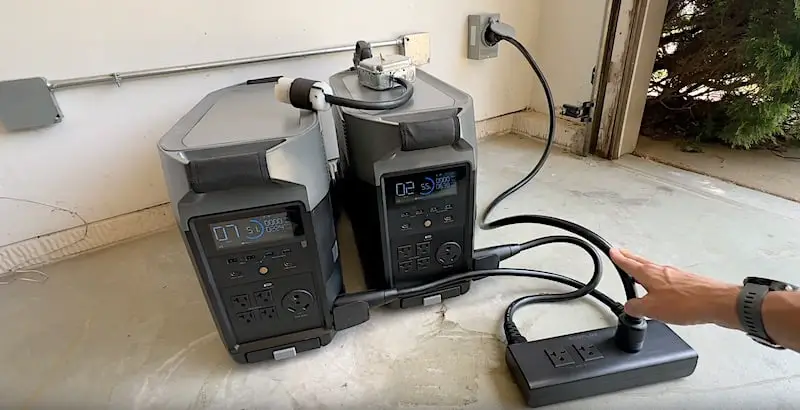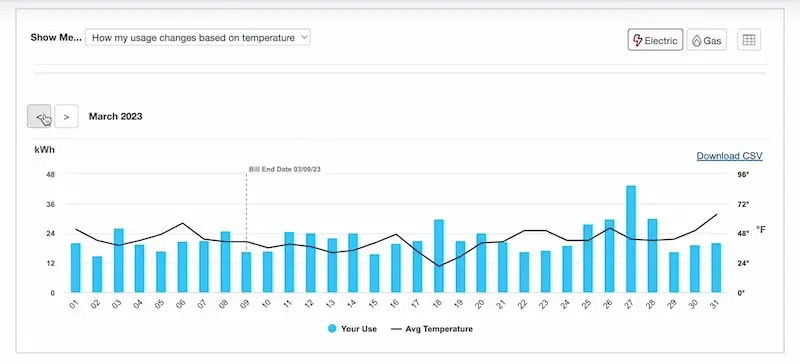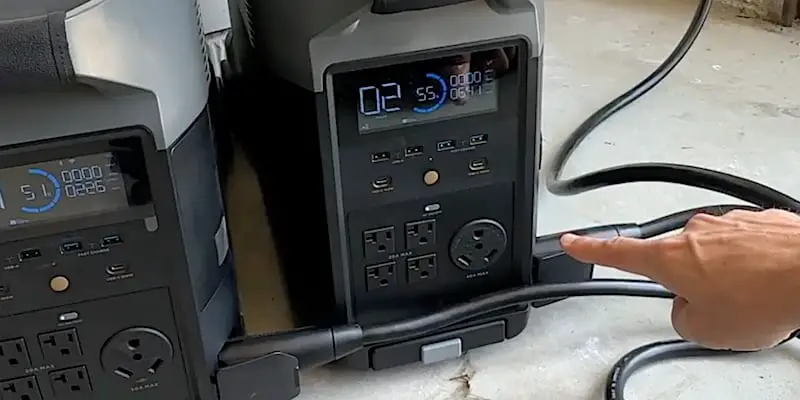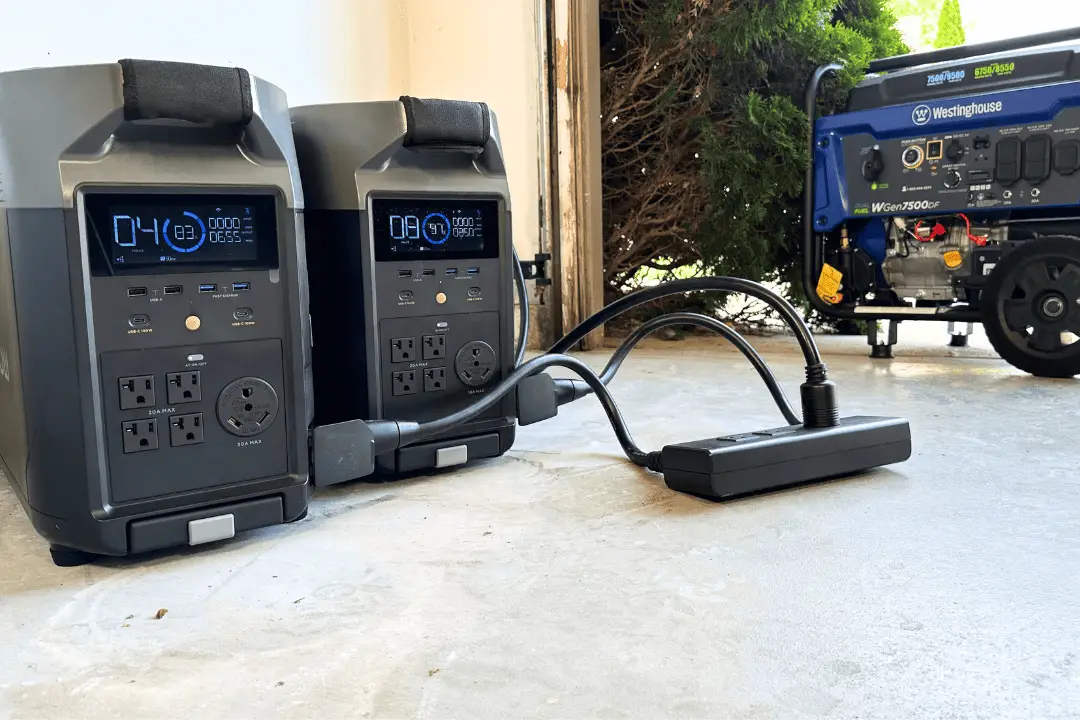So the power goes out and your gas generator won’t start. This is a problem many homeowners face when a generator sits for a long time without being maintained properly. Just when you need it most, you can find yourself struggling to get the generator going, and that can be very stressful when you have a refrigerator full of food or when it’s very cold outside and your source of heat is powered by electricity.
Some good alternatives to gas generators are starting to come into the marketplace. Today I’m testing what I think is one of the best backup generators for your home or RV on the market right now: the EcoFlow Delta Pro. These portable power units could be a viable way to replace an old gas generator.
In this test, I’m going to see how long the EcoFlow Delta Pro power stations can keep the essential items in my home running.
Rather watch than read? Check out this 7-minute video.
DISCLAIMER: This video and description contain affiliate links, which means that if you click on one of the product links, I’ll receive a small commission.
How Long Can the EcoFlow Delta Pro Portable Power Unit Power a Home?
Configuration of the Test Setup
In the setup I’m using for this test, I’ve got two EcoFlow Delta Pro portable power units linked together with a dual-voltage hub. The hub feeds into a 30-amp generator inlet with an interlock kit at the service panel.

Each of these generators has a capacity of 3.6 kWh, so together this system yields 7.2 kWh of energy storage.
So how long will 7.2 kWh of juice last if I need to power my entire home? Before I run the test, I’m going to research some benchmarks and do a few calculations.
Initial Benchmarks and Calculations
It’s obviously important to know what the energy consumption of your household is before putting together a backup generator system. Your energy provider will surely have an app or website where you can retrieve these details. By scanning the data, you can see what your daily, minimum, and maximum consumption levels are. This will give you a basis for the energy requirements of a backup generator system. If the power goes out, you can figure you’ll be drawing power at this level but most likely it will be less, seeing as you’ll probably turn off everything that’s not essential in the event of an outage.

My house uses 20-25 kWh in every 24-hour period in the wintertime. In summer, it can be as high as 60-70 kWh if I’m running the AC.
The minimum draw is as low as 16 kWh in a 24-hour period. If I were in a real power-outage situation, I’d be conserving as much energy as possible, limiting consumption to things like lights, the refrigerator, the furnace, WiFi, and cell phones.
EcoFlow Delta Pro Power Unit: Features
These EcoFlow power stations have an excellent range of functionalities: four different 120-volt, 20-amp outlets, a 30-amp RV outlet, and a number of different USB ports.

To power a whole house, you will almost surely need the setup I used for this test: two EcoFlow Delta Pro units plus the dual-voltage hub. The hub, which gives you the capability of 240 volts of output, is the key thing here. As far as portable power stations go, that is a rather unique feature.
Test Results: How Long Can an EcoFlow Delta Pro Portable Power Unit Power a Home?
After about four hours of powering my house with these two EcoFlow units, I’m down to 40% charge in one unit and 46% in the other. Note that the draw on each 120-volt branch will not be equal due to the distribution of critical circuits. I have between 500 and 700 watts running from one branch, depending on what my fridge is doing. The other branch is feeding out only 200/250 watts. When the power stations are working, you’ll need to keep an eye on this and maybe flip-flop the units so that the batteries drain down equally. I’ve already switched them once; that’s why the battery drain is fairly similar.
With this miminal-power-draw scenario — only running lights, my WiFi router, the refrigerator, and a few other miscellaneous items in addition to charging some personal electronic devices — these two EcoFlow portable power units can power my home for about seven hours. In the winter, I’d need to factor in my gas furnace, which pulls down about 900 watts when it’s running.
EcoFlow Delta Pro Portable Power Unit: Cost and Options
The price point of this setup (two EcoFlow Delta Pro portable power units plus the dual-voltage hub) is around $6,500.
The EcoFlow system is expandable. You can add two supplemental battery units to each power station. With this additional battery reserve, I’d have almost 22 kWh of power supply. Of course, the cost drifts up when you add these optional components.
Besides being expandable, the EcoFlow Delta Pro units can be charged with solar; they have all the smarts and capability built in to basically plug-and-play with solar panels. This makes them much more practical for multi-day backup generator situations, RVs, and off-grid scenarios.
If you’re interested in seeing how solar panels integrate into the Delta Pro power station, check out this video on our Everyday Solar YouTube channel.
Related Articles and Videos
Can a Portable Power Station Run a Sump Pump?
Solar Panel Installation: DIY or Professional?
To Leave Comments and Questions
The comments under the YouTube video are also a great source of info and ideas. If you have thoughts to contribute or questions, please feel free to leave a comment. I check the comments on a daily basis and am happy to help out.
Don’t forget to subscribe to our channel as we have weekly videos coming out to help you with your everyday home repairs.
Thanks for stopping by! Take care.




